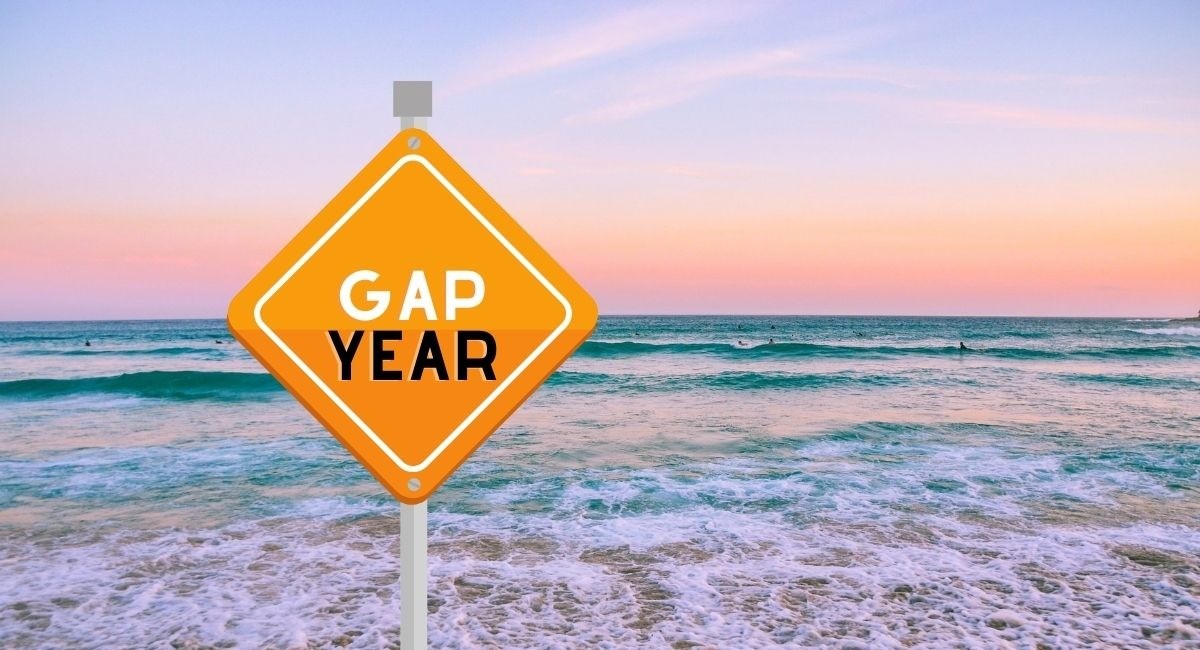Gap years are a historic rite of passage.
An entire year dedicated to exploring a way of life different on your own?!
Yasssss.
For some, this looks like spending a year as an au pair in Paris.
For others, it’s backpacking Nepal’s Anna Purna Circuit, bartending in London or taking a bite out of the Big Apple.
For many year 12s, a gap year is what keeps them going through their hardest years of schooling. A reward for making it through 13 long years of education.
Unfortunately, the coronavirus pandemic well and truly quashed the gap year dreams of the 43% of Gen Z graduates who had plans to explore the world in 2020-21.
Instead of jetting off overseas with their newfound freedom, not only were school leavers stuck inside the country due to Australia’s international travel ban, but they’ve also been stuck at home during lockdowns and locked inside their own states due to border closures.
An 18-year-old female from Queensland said the pandemic had upended their future plans after school to work and travel in Europe.
“My original plan was to travel overseas to Denmark and be an Au Pair,” she said.
“But since corona, they stopped giving out Visas and I can no longer make the trip, so I’ve decided to go to uni instead, even though I was certain that I wanted to take a gap year.”
An 18-year-old female from NSW said they were planning on having a gap year with their closest friends travelling through Europe to take the time to figure out what they wanted to study the following year.
“That plan was getting me through the HSC. Well I no longer can leave the country and have no clue what to do instead because I need a break before going to university and pursuing a career,” she said.
But with Australia’s ban on international travel finally lifting, it might finally be time for Gen Zs to take off on that well-deserved year off.
The question is… where to?!
Choosing a gap year destination
As we’ve learned over the past two years, travelling during a pandemic is unpredictable and volatile at times (just ask one of the tens of thousands of Australians who have been stranded overseas since March 2020).
But with vaccine rollouts making travel a little less tricky, a gap year destination’s vaccine uptake is a good place to start.
For example, some traditional gap year locations are battling vaccine hesitancy or are struggling to access enough vaccines to inoculate the population.
This makes them a little riskier to travel to from both a health standpoint, and as outbreaks are more likely to trigger lockdowns and travel restrictions.
We took a look at the New York Times’ global COVID vaccinations tracker with our gap year glasses on to help get you started.
Common gap year destinations with high vaccination rates
- Portugal (87% fully vaccinated)
- Cambodia (81% fully vaccinated)
- Spain (80% fully vaccinated)
- China (77% fully vaccinated)
- Japan (77% fully vaccinated)
- Canada (77% fully vaccinated)
- New Zealand (73% fully vaccinated)
Common gap year destinations with low vaccination rates
- South Africa (24% fully vaccinated)
- Nepal (28% fully vaccinated)
- India (32% fully vaccinated)
- Thailand (58% fully vaccinated)
- Peru (58% fully vaccinated)
- USA (59% fully vaccinated)
- UK (69% fully vaccinated)
Uncommon gap year destinations with high vaccination rates
- U.A.E (90% fully vaccinated)
- Singapore (88% fully vaccinated)
- Chile (85% fully vaccinated)
- Cuba (80% fully vaccinated)
- Brunei (79% fully vaccinated)
- Iceland (78% fully vaccinated)
- Uruguay (77% fully vaccinated)
So where’s it going to be, Gen Z?






